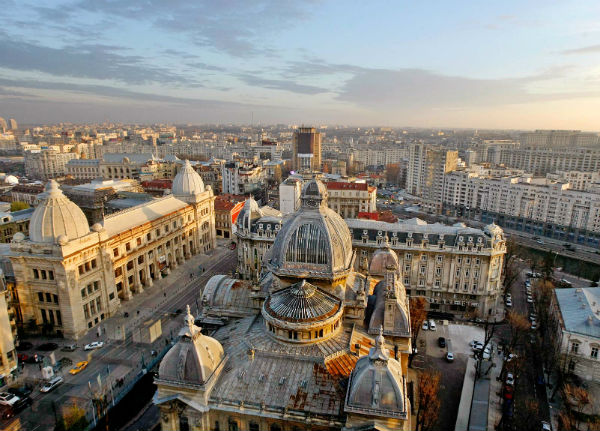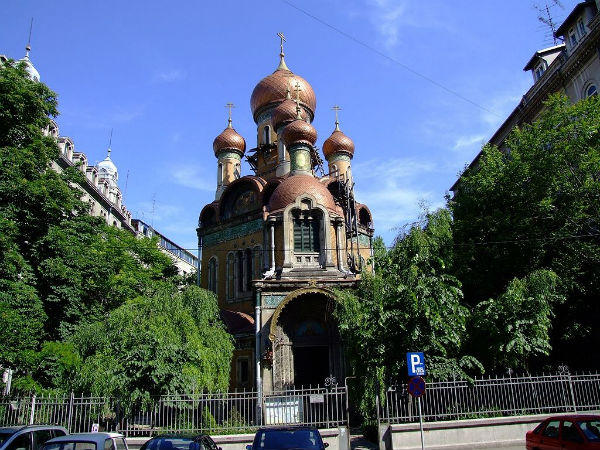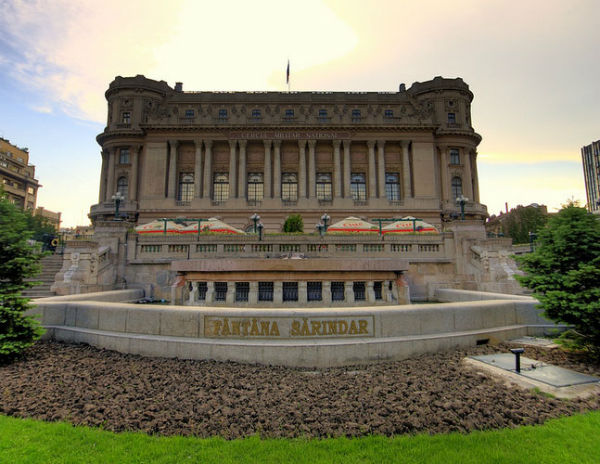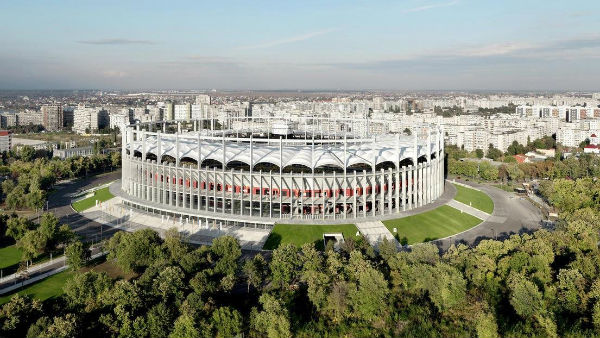Bucharest (Bucuresti), the home for the 10% of the total Romanian population has about 2 million residents. Comparing Bucharest to other cities of Romania you can imply it as a relatively young city. Bucharest was mentioned in old chronicles in 1459 (for the first time) during the reign of the legendary prince Vlad Tepes. Bucharest had been a princely residence of Dracula for a period of time. Now prince Vlad watches over the passers-by from the Princely Court. His bust was erected here in 2003, for 544th birthday of the city.
In 1659, Bucharest becomes the capital city of Romanian principality of Wallachia. The city continues to grow rapidly in 1862 Bucharest was finally proclaimed the capital of Romania and presently remains this status.
Bucharest is the quintessence of the last 550 years of Romanian history; the city has experienced the Ottoman occupation, floods, Russian-Turkish and Austrian-Turkish wars, a fire in the middle of the XIX century, two World Wars, communism era, revolution against the regime of Nicolae Ceausescu and even mineriads (miners’ campaign in the city after the revolution ).
Almost until the middle of the XX century French motives dominated the architecture style of Bucharest; the city was often called as “Little Paris of the East”. Most buildings, palaces, villas and wide boulevards reflect the style of the famous French architects of the XIX century. The Second World War, as well as the demolition of monuments in 60-70s and the construction of typical cheap house-boxes instead of demolished sturctues under the regime of Ceausescu partially destroyed the former beauty of the city.
Following the orders of former Romanian dictator Ceausescu the entire city was built up with various plants aimed to develop the industry as well as with sleeping quarters for workers, monotonous buildings dominated by the color of gray ferroconcrete. It is hard to say that this style of architecture pleases the eyes of residents and visitors.
The emphasized facts explain the reason why Bucharest is known as the “city of contrasts”. Old beautiful styles coexist with dull socialist buildings, legacy of Ceausescu. Sometimes it is difficult to imagine that a real masterpiece of architecture, the old church of XVII-XVIII centuries, or some sort of boyar mansion or palace or other unique historical monument is hidden beyond the high socialist buildings. You may marvel the cultural palace of Athenaeum situated by the monument to the great Romanian poet Mihai Eminescu, or the Royal Palace, but see gray houses just 100 meters afar from them built for workers right in the center of the city during the communist regime of Ceausescu.
But fortunately some architectural styles are still preserved; due to these styles the city was widely known as one of the most beautiful capitals of Eastern Europe in the early XX century. You will see the former houses of artisans and merchants of XVII-XVIII centuries in the Old Town, along the Stavropoleos, Lipskan and Blenar streets.
The northern part of the capital is considered to be especially beautiful. At first, everything is drowning in greenery there, as famous city parks and lakes such as Kiselev’s Park, Herastrau Park, Floreasca Lake and Herastrau Lake are located exactly in the northern part of Bucharest. There are much less industrial areas in the northern part of the capital; on the contrary, wide and beautiful green boulevards, embassies, foreign agencies, manors, luxury mansions and elegant villas of XIX century are located here. You will see the real mixture of styles: the Renaissance, Neo-baroque, Brynkovenesk (Romanian style of architecture) as well as the influence eastern Byzantine style. Eclectic dominates the city and grants it a special charm.
During the tour of Bucharest you will see the Palace of the Parliament, one of the giant projects of Nicolae Ceausescu.
Building is recorded in the Guinness Book of Records as the second largest in the world after the Pentagon, and the third spacious. Unirea Square is one of the biggest square of Europe; “Romanian Champs Elysees” – the Unification Boulevard and fountains depicting counties of Romania and the capital city of Bucharest.
Another local place of interest is the Cotroceni Palace, the former royal palace of King Ferdinand. A visit to the Romanian Athenaeum and Philharmonic Hall will also impress you.
We will see the northern gates of the capital, the Arc de Triomphe, as well as many other beautiful monuments of architecture and history, will visit a Monument to the Air Heroes, the statue of the Roman Wolf, the monument to Michael the Brave, Revolutionaries Monument, Stavropoleos Church, St. Nicholas Church, Romanian Patriarchate, will stroll through the picturesque alleys of Cişmigiu Park and the pedestrian streets of the Old City.
In order to truly feel and admire the spirit of capital, it is certainly advised to take a walk through Bucharest and have a look to the Cantacuzino Palace, House of Officers, the Savings Bank… These buildings certainly deserve more than a glimpse from the bus.
Bucharest is undoubtedly one of the most interesting capitals of Europe, there is so much to see in this city!
But you need to take the time in order as one hour of bus tour of the city is certainly not enough. Wear comfortable and stroll along the main squares, parks and ancient streets, visit the most interesting attractions and admire the marvelous style of architecture! After such a busy day of excursions you will have fond memories for sure!
Excursions from Bucharest:
Bran Catle + Peles Castle + City of Brasov
Poenari Castle and the Monastery of Curtea de Argeş
The price of the tour starts from AZN 500 per person (excluding airfare and visa fees).





